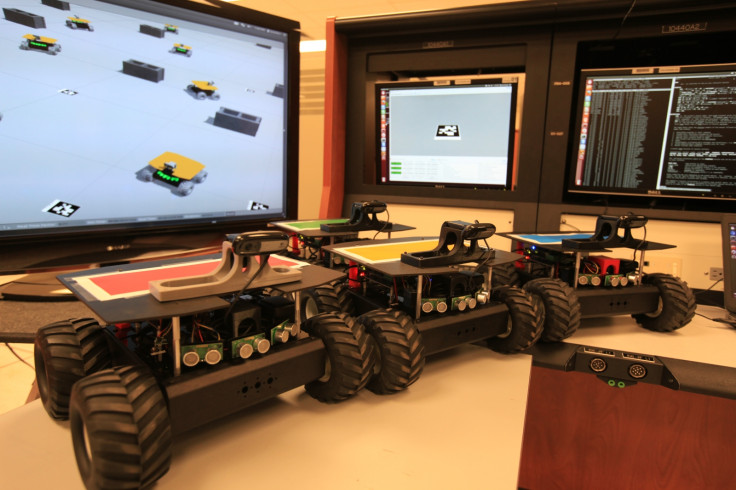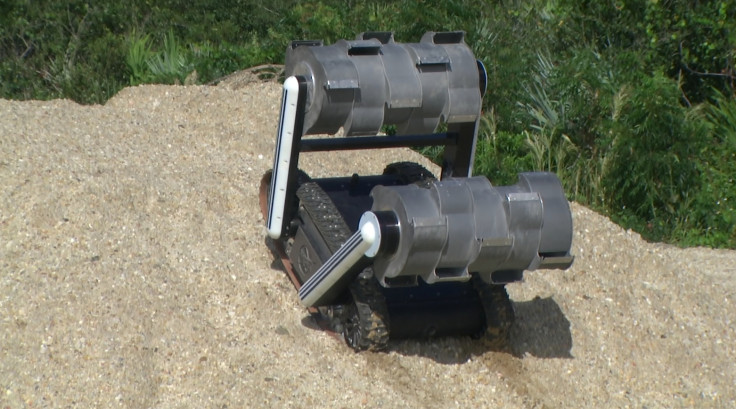Space: Robot Swarms Being Trained To Work Like Ants

Four small robots equipped with a webcam, WiFi antenna and GPS have been programmed by Nasa's engineers to spread out and scan an area for a chosen object.
Right now they are only tasked to find a barcoded piece of paper in the parking lot around Kennedy Launch Control Centre. In the future they could be examining the moon's soil or Mars for water or minerals, or sniffing the air for signs of oxygen.
These small robots, only slightly bigger than toys and called "swarmies", will be able to survey an area and call out to the others on stumbling upon a valuable clue -- operating just like ants in a colony would, according to Nasa.

The swarmies are built with only a couple of instruments and a single purpose. Instead of one big unit plodding its way through lonely alien terrains, these robots can actually 'scurry' around in different directions and survey a larger area by working together. The task is divided and accomplished faster.
"We're entering the phase where we do a ton of trial runs and collect the data and that's well ahead of schedule," said Cheryle Mako, an engineer at Nasa's Kennedy Space Centre in Florida, who is leading the project. "From an investigation perspective, we are spot-on and have made great strides."
Mining Mars
The team plans to include the RASSOR, an experimental mining robot designed at Kennedy to try out different techniques for digging into the lunar or Martian surfaces and gather material.
"For a while people were interested in putting as much smarts and capability as they could on their one robot," Kurt Leucht, another engineer in the team said. "Now people are realizing you can have much smaller, much simpler robots that can work together and achieve a task. One of them can roll over and die and it's not the end of the mission because the others can still accomplish the task."
There are many practical applications for "swarmies" on earth. Besides looking for survivors of disasters, smaller versions could check for leaks in water or gas pipelines.
The work builds on research conducted at the University of New Mexico.
© Copyright IBTimes 2025. All rights reserved.





















